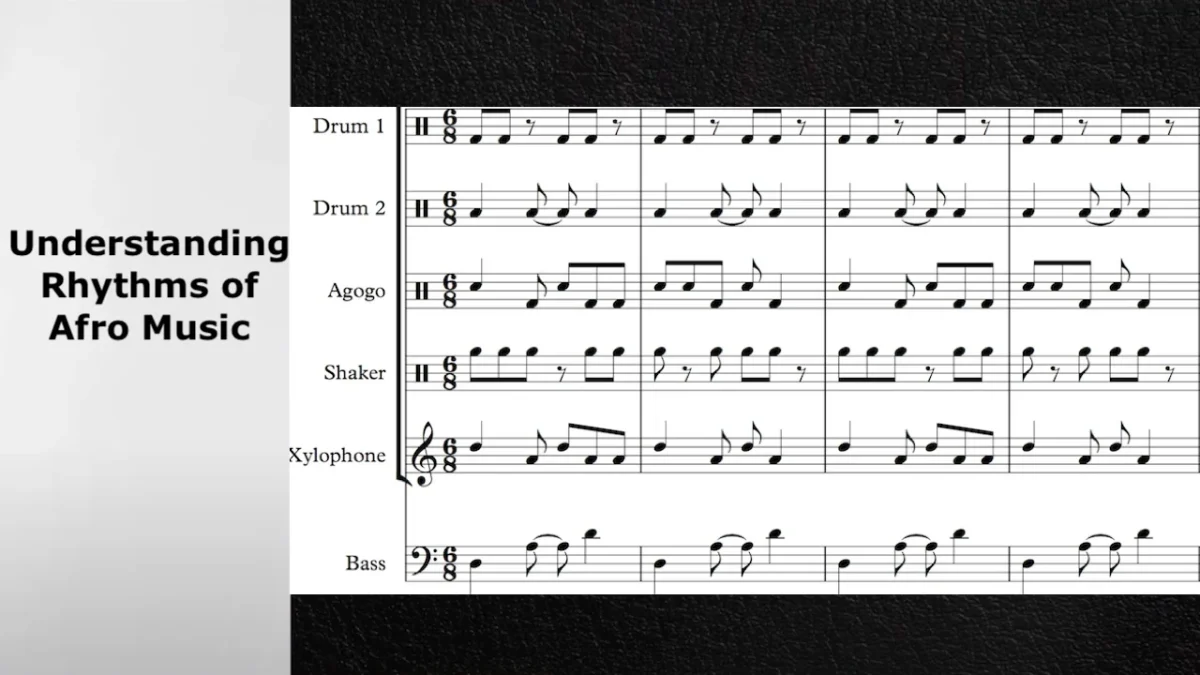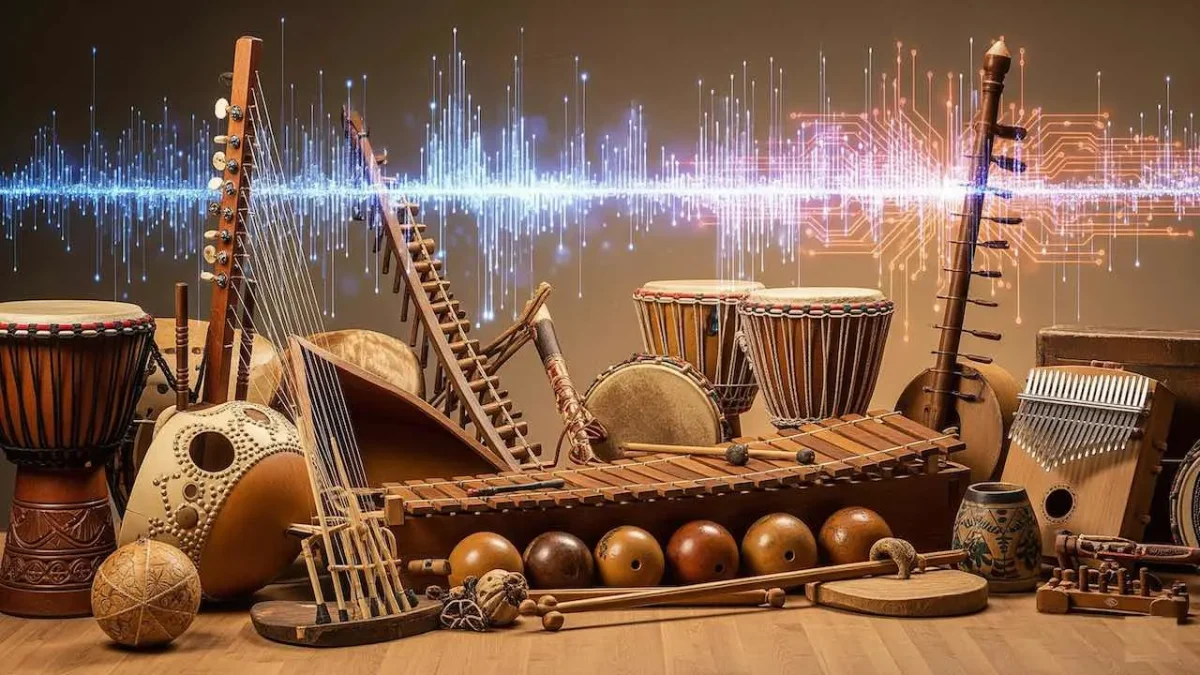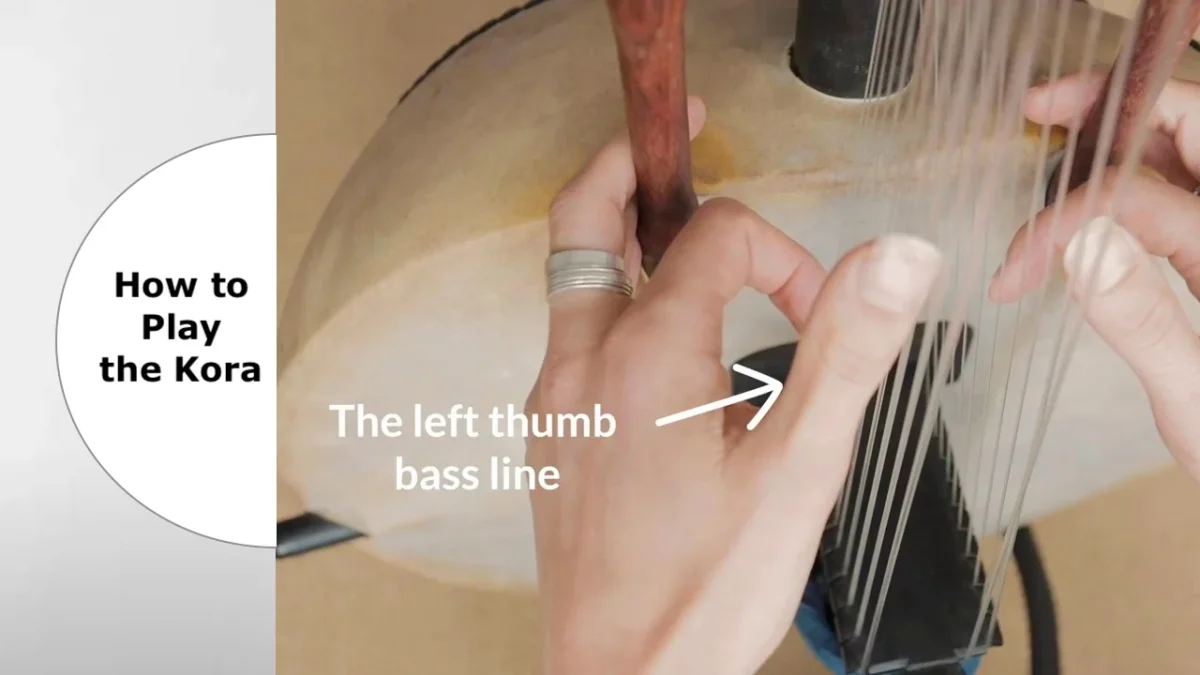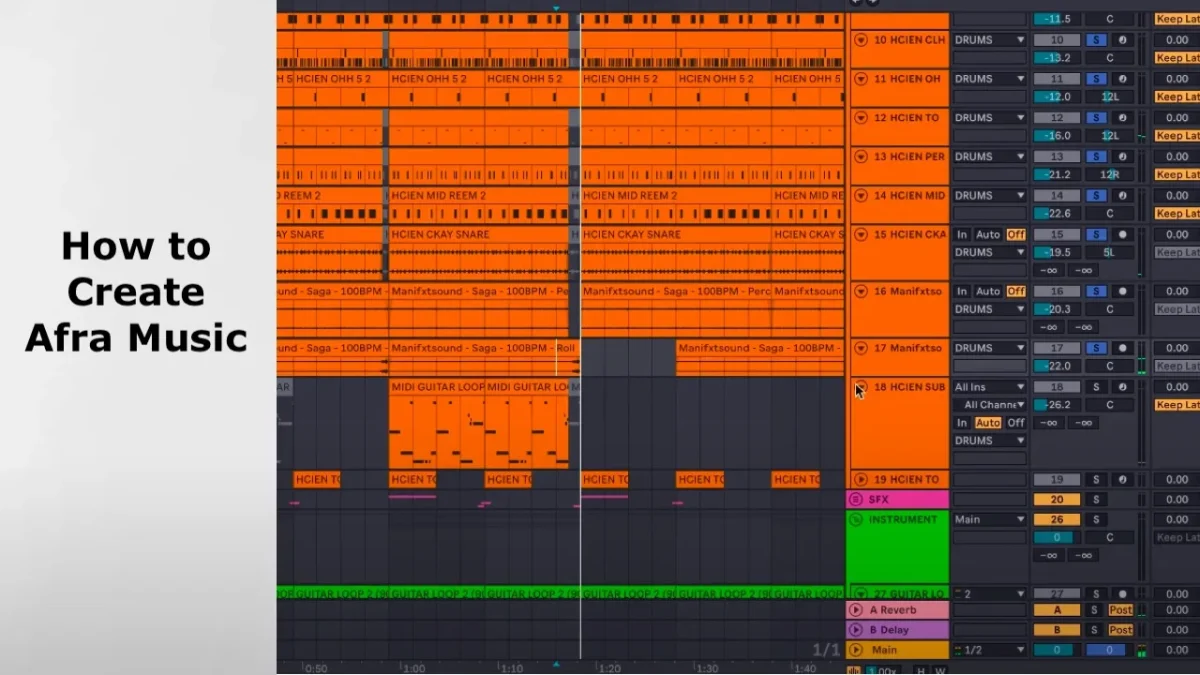
Rhythms of Afro Music: Polyrhythmic Patterns and Cross-Beat Structures
Rhythms of Afro Music feature polyrhythmic patterns where multiple contrasting rhythms interlock simultaneously. These complex rhythmic structures form the foundation of African musical traditions, using cross-beats, syncopation, and time signature combinations like 12/8 over 4/4 to create dynamic, layered soundscapes that inspire modern genres worldwide.
What Are Polyrhythmic Patterns in African Music
Polyrhythmic patterns combine multiple rhythms with different time signatures played simultaneously. These polyrhythms can be found in drumming circles, traditional dances, and even modern genres like Afrobeat. West African musicians master this technique by layering contrasting rhythmic elements that create complex, shifting patterns.
The foundation relies on time-line patterns that serve as rhythmic backbones. African music featured distinctive bell patterns which acted as the rhythmic backbone, and continued to serve the same role in the music of African slaves across the Atlantic. These patterns guide other instruments and maintain structural integrity within polyrhythmic compositions.
Cross-Beats and Syncopation Techniques
Cross-beats create rhythmic tension by placing accents against the main pulse. Among the characteristics of the Sub-Saharan African approach to rhythm are syncopation and cross-beats which may be understood as sustained and systematic polyrhythms. Musicians develop these skills through childhood games that build multiple rhythm awareness.
Syncopated beats emphasize off-beat positions within measures. Mbalax often features a combination of 12/8 and 4/4 time signatures, with intricate cross-rhythms played on drums, accompanied by fast, off-beat phrasing on guitars and keyboards. This creates the characteristic “swing” feeling in African musical expressions.
| Rhythm Type | Time Signature | Characteristics | Instruments Used |
|---|---|---|---|
| Polyrhythmic | Multiple overlapping | Contrasting patterns | Djembe, bells, shakers |
| Cross-beat | 4/4 over 6/8 | Off-beat emphasis | Talking drums, kenkeni |
| Timeline | 12-pulse patterns | Structural foundation | Cowbells, clapsticks |
| Syncopated | Displaced accents | Rhythmic tension | Dundun, sangban |
Traditional Drumming Patterns and Time Signatures
Traditional African drumming uses complex time signatures that differ from Western 4/4 structures. Polyrhythms, in a nutshell, are combinations of rhythms using different time signatures, played together. Common patterns include 12/8, 6/8, and various composite meters that create rhythmic sophistication.
Djembe rhythms form the cornerstone of West African percussion traditions. It is played in 4/4 time, which means there are 4 quarter notes per bar. However, master drummers layer additional patterns in different time signatures over this basic structure, creating polyrhythmic complexity.
Essential Drumming Techniques
Master drummers employ specific hand techniques to produce distinct sounds. Bass tones, slaps, and touch tones combine with timing variations to create rhythmic conversations between instruments. Each drum voice contributes unique elements to the polyrhythmic ensemble.
Call and response patterns structure many traditional rhythms. Solo drummers initiate rhythmic phrases while ensemble members respond with complementary patterns. This interactive approach builds community participation and musical dialogue.
Regional Variations Across Africa
Different African regions develop unique rhythmic characteristics while sharing common polyrhythmic principles. The distribution of the 12-pulse seven-stroke pattern is mostly along the West African coast—for example, in the music of the Yoruba, Fon, and Ewe—but also in Congo (Kinshasa), Angola, and Zambia. Each culture adapts basic concepts to create distinctive local styles.
West African traditions emphasize complex polyrhythmic interactions. The idea of layering two rhythms against each other is far from unique to the region, but few other cultures have applied it with more power than the Ewe drummers of Ghana, Togo, and the surrounding area. These techniques influence global music through cultural exchange and migration.
| Region | Signature Rhythms | Key Instruments | Cultural Context |
|---|---|---|---|
| West Africa | Djembe patterns, Ewe drumming | Djembe, dundun, kagan | Ceremonial, social gatherings |
| Central Africa | Makossa, Bikutsi rhythms | Talking drums, xylophones | Storytelling, communication |
| East Africa | Taarab, Benga patterns | Oud, nyatiti, drums | Coastal influences, trade |
| Southern Africa | Marabi, Mbaqanga styles | Marimba, drums, vocals | Urban development, migration |
Modern Applications in Contemporary Music
Contemporary genres incorporate African rhythmic concepts into modern musical expressions. Afrobeat is a genre that blends rhythm, melody, and cultural expression. Its use of polyrhythmic patterns, syncopated beats, and traditional African instruments creates a sound that’s distinctively powerful and globally influential.
Jazz, funk, and world music heavily draw from African rhythmic traditions. West African rhythmic techniques carried over the Atlantic were fundamental ingredients in various musical styles of the Americas: samba, forró, maracatu and coco in Brazil, Afro-Cuban music and Afro-American musical genres such as blues, jazz, rhythm & blues, funk. These connections demonstrate the lasting impact of African rhythmic innovation.
Digital Production Techniques
Modern producers use software to recreate traditional polyrhythmic patterns. Digital audio workstations allow layering multiple rhythm tracks with different time signatures. Sample libraries capture authentic African drum sounds for contemporary compositions.
Electronic music genres like Afro-house and Afro-tech blend traditional rhythmic concepts with modern production. Artists combine ancient polyrhythmic wisdom with current technology to create fresh musical expressions that honor cultural heritage.
Learning Polyrhythmic Fundamentals
Learning African rhythms requires understanding polyrhythmic relationships and practicing limb independence. Students start with simple patterns before advancing to complex multi-layered compositions. Body movement integration helps internalize rhythmic concepts naturally.
Practice methods include clapping exercises, drum circle participation, and individual instrument study. How to Play the Kora provides string instrument perspectives on African rhythmic accompaniment. Traditional African Instruments explores various percussion and melodic tools used in rhythmic ensembles.
Essential Practice Exercises
Begin with basic clapping patterns in 4/4 time while counting subdivisions. Add foot tapping in different time signatures to develop limb independence. Progress to simple polyrhythmic combinations like 3-against-2 patterns.
Metronome practice helps maintain steady pulse while adding rhythmic complexity. Record practice sessions to evaluate timing accuracy and rhythmic consistency. Join drum circles or rhythm groups for collaborative learning experiences.
Cultural Significance and Community Functions
Rhythms of Afro Music serve important social and spiritual functions within communities. In Africa it is unrealistic to separate music from dance or from bodily movement. Rhythmic expressions connect people through shared cultural experiences and collective participation.
Ceremonial contexts use specific rhythmic patterns for different occasions. Wedding rhythms differ from funeral patterns, harvest celebrations require unique beats, and spiritual ceremonies employ specialized rhythmic formulas. Each pattern carries cultural meaning and community significance.
Afro Music Festivals: A Cultural Celebration and Global Stage examines how rhythmic traditions connect communities worldwide. The Business of Afro Music explores commercial aspects of rhythmic music distribution and promotion.
Advanced Polyrhythmic Concepts
Advanced practitioners master complex polyrhythmic interactions between multiple instrumental voices. Many African music traditions utilize polyrhythms, in which multiple rhythms are played simultaneously, creating a layered and dynamic sound. These sophisticated techniques require years of dedicated practice and deep cultural understanding.
Master drummers develop the ability to switch between different rhythmic roles during performances. Lead drummers call patterns while maintaining their own complex rhythms. Support drummers respond with complementary patterns that enhance overall polyrhythmic texture.
Improvisation Within Structure
Skilled musicians improvise variations while maintaining essential rhythmic frameworks. Afra Music Improvisation Tips for Beginners provides guidance for developing creative expression within traditional structures.
Rhythmic conversations develop between musicians through call and response patterns. Individual expression flourishes within collective rhythmic frameworks. Master performers balance personal creativity with community musical needs.
Technology and Rhythmic Analysis
Modern technology enables detailed analysis of complex African rhythmic structures. Digital tools visualize polyrhythmic relationships through waveform analysis and rhythm mapping software. Educational applications help students understand timing relationships between different rhythmic layers.
Notation software adapts to represent African rhythmic concepts more accurately. Traditional Western notation limitations require new approaches for documenting polyrhythmic music. Audio recording remains more effective than written notation for preserving rhythmic authenticity and cultural context.
Learning to Play Afro Music discusses various educational approaches for rhythmic skill development. How to Create Afra Music covers production techniques for incorporating traditional rhythmic elements into modern compositions.
People Also Ask
African rhythms emphasize polyrhythmic patterns and cross-beats rather than single-pulse emphasis. Multiple contrasting rhythms play simultaneously, creating complex textures that differ from Western music’s typical 4/4 emphasis patterns.
Count polyrhythmic patterns by maintaining awareness of multiple pulse streams simultaneously. Practice counting 3-against-2 patterns by saying “1-2-3” against “1-2” until both rhythms feel natural together.
West African countries like Ghana, Mali, Guinea, and Senegal maintain particularly strong rhythmic traditions. These regions developed sophisticated polyrhythmic systems that influence global music through cultural exchange and migration.
Beginners can learn African polyrhythms through progressive practice starting with simple patterns. Master basic clapping exercises before advancing to drum techniques and complex multi-layered compositions.
Frequently Asked Questions
Essential instruments include djembe drums, dundun bass drums, cowbells, and shakers. Each instrument contributes specific tonal qualities and rhythmic functions within polyrhythmic ensembles.
Mastering African rhythmic patterns requires several years of dedicated practice and cultural immersion. Basic patterns can be learned within months, while advanced polyrhythmic skills develop over decades of study.
African rhythms often combine multiple time signatures simultaneously rather than using single Western meters. Common combinations include 12/8 over 4/4 and various composite meters that create rhythmic complexity.
Rhythms provide spiritual and social structure for African ceremonies. Specific patterns invoke particular meanings, connect communities, and facilitate trance states during religious and cultural celebrations.
Modern producers layer multiple rhythm tracks with different time signatures using digital audio workstations. Sample libraries provide authentic African drum sounds while software enables complex polyrhythmic programming and manipulation.



